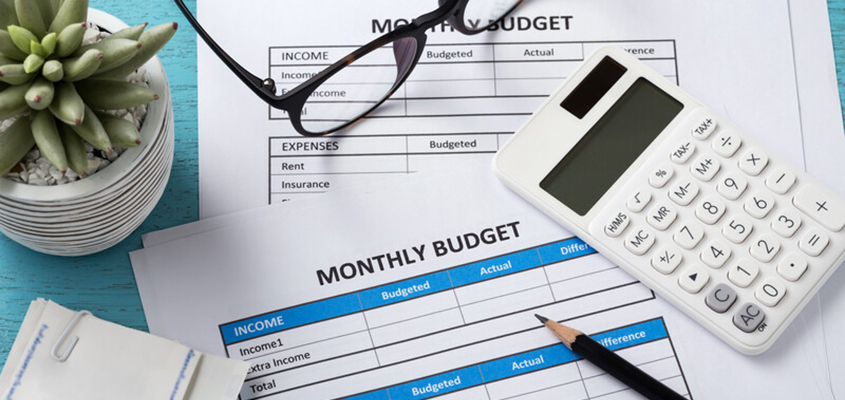Creating a budget is the first step towards organizing your finances. Creating a budget that you will actually follow is even more important. When creating a budget you should be realistic and very honest with yourself. Here are some great tips on how to create a monthly budget you can actually follow.
Understand Your Financial Goals
If you have any financial goals you hope to achieve, take note of them and write them down so you don’t forget.
Whether you want to set a long-term goal like saving for retirement, or you want to challenge yourself to save $500 by the months end.
Setting financial goals is a great way to motivate yourself to keep on track and spend less money.
Calculate Your Total Income
When creating a budget you should begin the process by figuring out how much you (and if applicable, a spouse or partner) bring home each month. Start by calculating the total take-home pay (after tax) for the household. This figure should include every ongoing source of income. Count everything you bring in, this is not for the IRS. Child support, extra tips, babysitting or any side hustle you have that brings in extra funds.
Figure Out Your Expenses
Your first order of business is finding out exactly how much you’re spending each month. Do this by consulting your bank statements, receipts, and financial files. Because some expenses are intermittent, such as insurance payments, you’ll get the most accurate financial picture if you calculate an average of six months to a year. Add up everything you spent for the last six to 12 months and then divide by the number of months, which will give you your average monthly expenses.
Remember that being thorough when you add up expenses is important in creating a realistic budget. A forgotten bill really throws a wrench into your savings plan. When calculating your expenses, also factor in unexpected bills, such as unplanned car repairs. A good rule of thumb is to add an extra 10 percent to 15 percent. So if you’ve determined that you spend $1,500 a month, add $150 to $225.
Types of Expenses
Fixed monthly expenses
These expenses tend to stay the same (or close to the same) from month to month. They include bills such as your rent or mortgage, cable, Internet, utilities and fixed loan repayments.
Variable expenses
These expenses change from month to month. They include things like gas, groceries, your daily coffee, meals out and entertainment expenses.
Occasional expenses
These expenses come up from time to time, such as clothing, gifts, and vacations.
Put All On Paper
Add up all of your income sources and then add up all of your expenses. This will give you a good idea where you stand. Do you have a lot of extra money at the end of the month or is your budget really tight? For a vast majority of us, the latter is generally true, and if that’s true for you too, then it’s time to take a close look at your expenses. You’ll want to determine which items on your budget are essential expenses, such as your rent/mortgage, condo fees, utility bills, insurance, car payments, and pay those first. Next, determine which of your expenses are “extras” or “comfort items”. If your budget is too tight, you’re going to need to make a choice. Using our example above, is it really necessary that you buy a large coffee every day, or can you sacrifice the extra few minutes every morning and just make it yourself. This is true for nearly every item on your budget that is considered “non-essential”. Figure out what’s most important to you and figure out a way to make your budget work for you.
Use Tools and Apps
You can keep budgets on paper, but there are also lots of apps and software that can help you plan your cash flow more efficiently. Quicken, Mint, You Need a Budget and GoodBudget are some the best known and longest-running, mutual funds and investment-advice companies offer their own budgeting apps. Look around and find one that works for you.
Remember that a key part of the process is tracking actual cash flows. Keep a ledger or enter income and expenses in a computer program. Then compare the results to the budget. If your expenses are too high, rein them in.
Whether a paper budget or something on a computer or smartphone, remember that a budget is a planning tool. You have to take the actions needed to make it work.

